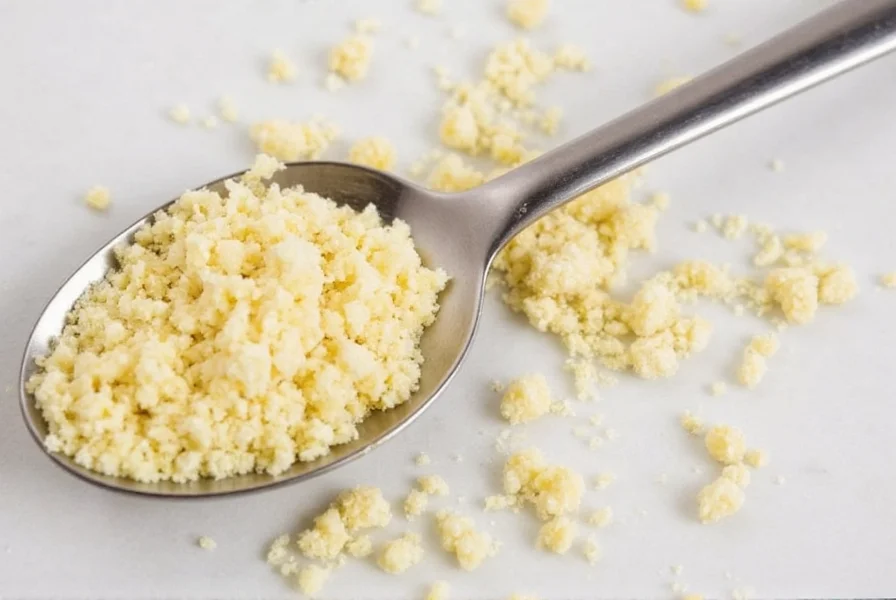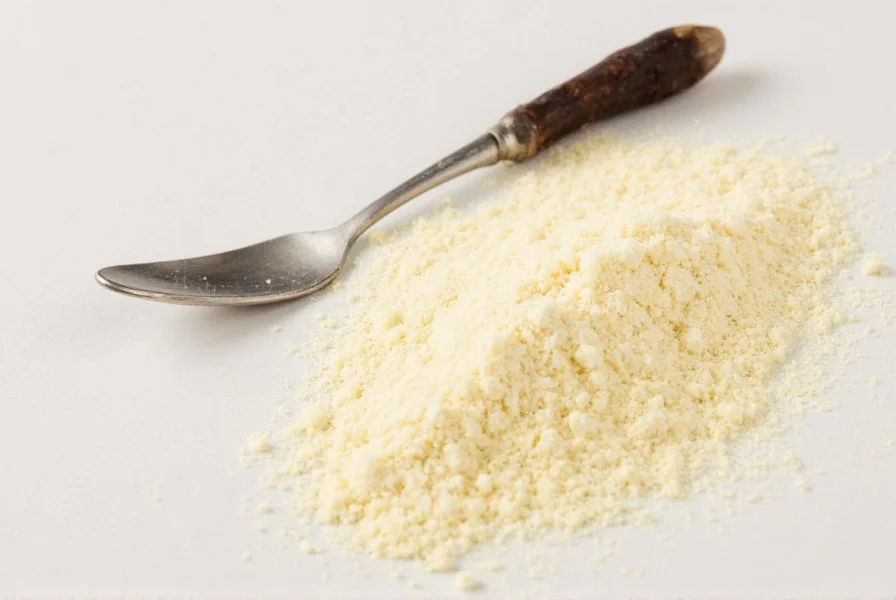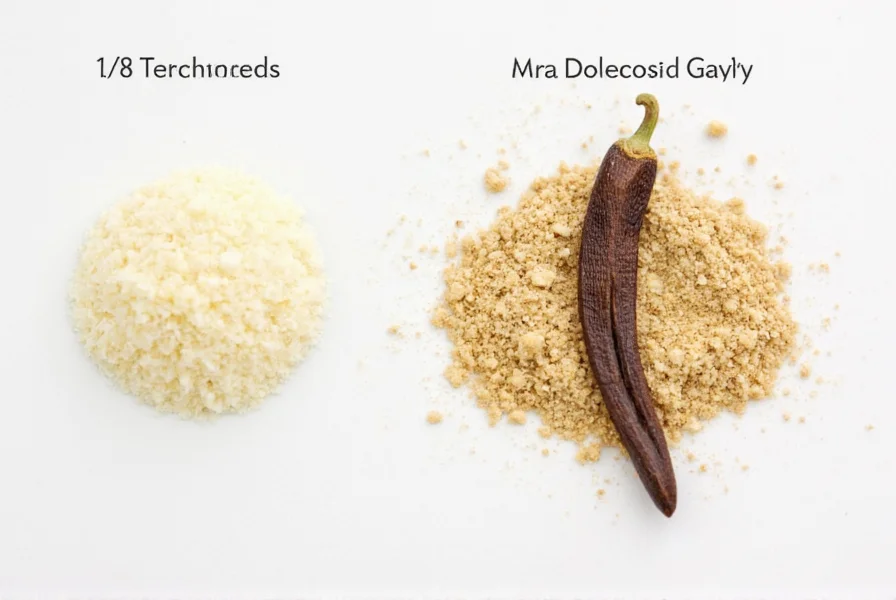When substituting garlic powder for fresh garlic in your cooking, understanding the exact conversion is essential for recipe success. Many home chefs struggle with this simple but crucial measurement, often resulting in dishes that are either bland or overwhelmingly garlicky. Let's explore the science behind this conversion and provide practical guidance for perfect results every time.
| Fresh Garlic | Garlic Powder Equivalent | Garlic Salt Equivalent* |
|---|---|---|
| 1 clove | 1/8 teaspoon | 1/4 teaspoon |
| 2 cloves | 1/4 teaspoon | 1/2 teaspoon |
| 3 cloves | 3/8 teaspoon | 3/4 teaspoon |
| 4 cloves | 1/2 teaspoon | 1 teaspoon |
| 6 cloves | 3/4 teaspoon | 1 1/2 teaspoons |
| 8 cloves | 1 teaspoon | 2 teaspoons |
*Note: Garlic salt contains additional sodium, so adjust overall salt in your recipe accordingly.
Why the 1:1/8 Conversion Ratio Works
Garlic powder represents a concentrated form of garlic flavor. During the dehydration process, fresh garlic loses approximately 80-85% of its moisture content, leaving behind the potent flavor compounds in a much smaller volume. This concentration explains why you need significantly less powdered garlic compared to fresh.
Food scientists have determined through sensory testing that 1/8 teaspoon provides the optimal flavor equivalence to one medium-sized garlic clove (approximately 4-7 grams). Using more than this recommended amount often results in an artificial, overly sharp garlic flavor that lacks the nuanced complexity of fresh garlic.

Practical Substitution Guidelines
While the standard conversion works for most recipes, consider these factors when substituting:
- Recipe Type Matters: For delicate sauces or dressings, use 1/16 teaspoon per clove to prevent overpowering other flavors
- Garlic Powder Age: Older garlic powder loses potency; if your container is older than 6 months, increase by 1/16 teaspoon
- Recipe Cooking Time: For dishes simmering longer than 30 minutes, reduce by 1/16 teaspoon as flavors concentrate during cooking
- Personal Preference: Adjust within 1/16 teaspoon increments based on your taste preferences
Avoiding Common Substitution Mistakes
Many home cooks make these critical errors when substituting garlic powder for fresh:
- Using equal measurements - Never substitute 1 clove with 1 teaspoon of powder (this creates an overwhelmingly strong flavor)
- Not accounting for garlic salt - Remember that garlic salt contains additional sodium that affects overall seasoning
- Adding too early in cooking - Garlic powder burns easily; add during the last 5-10 minutes of cooking for best results
- Ignoring freshness factors - Older garlic powder loses potency while fresh garlic intensity varies by season
Storing Garlic Powder for Maximum Potency
To maintain your garlic powder's flavor strength and ensure accurate conversions:
- Store in an airtight container away from light and heat
- Keep away from strong-smelling spices that can affect flavor
- Replace every 6-12 months for optimal potency (even if the container says 2 years)
- Test potency by rubbing a small amount between fingers - strong aroma indicates freshness

When Fresh Garlic Works Better Than Powder
While garlic powder offers convenience, certain recipes truly benefit from fresh garlic:
- Romesco sauce and other raw garlic preparations
- Garlic bread where texture matters
- Recipes specifically highlighting garlic as the star ingredient
- Dishes requiring the subtle sweetness of roasted garlic
Understanding when to use each form represents the mark of an experienced cook. The garlic powder to fresh garlic conversion ratio serves as your foundation, but developing intuition about which form works best for specific dishes elevates your cooking to the next level.
Frequently Asked Questions
Can I use garlic powder instead of minced garlic in equal amounts?
No, you cannot use equal amounts. One teaspoon of minced garlic equals approximately 1/4 teaspoon of garlic powder. Using equal measurements would make your dish overwhelmingly garlicky and potentially bitter.
Does the size of the garlic clove affect the conversion?
Yes, clove size matters. The standard conversion (1/8 teaspoon powder = 1 clove) assumes a medium-sized clove (4-7g). For small cloves, use 1/16 teaspoon; for large cloves, use 3/16 teaspoon. When recipes specify "large" or "small" cloves, adjust accordingly.
How does garlic powder compare to garlic paste in recipes?
Garlic paste is closer to fresh garlic in potency than powder. One teaspoon of garlic paste equals one clove, while 1/8 teaspoon of powder equals one clove. Garlic paste provides more moisture and a fresher flavor profile than powder but less than whole cloves.
Why does my dish taste different when using garlic powder instead of fresh?
Fresh garlic contains allicin, which creates complex flavor compounds when crushed or chopped. Garlic powder lacks these enzymatic reactions, resulting in a more one-dimensional flavor. For closer flavor matching, add a tiny pinch of onion powder and a drop of lemon juice when substituting.
Can I make my own garlic powder for better flavor?
Yes, homemade garlic powder often has superior flavor. Thinly slice fresh garlic, dehydrate at 140°F (60°C) for 6-8 hours until brittle, then grind to powder. Store in an airtight container. Use a 1:10 fresh-to-powder ratio (10g fresh yields approximately 2g powder).











 浙公网安备
33010002000092号
浙公网安备
33010002000092号 浙B2-20120091-4
浙B2-20120091-4